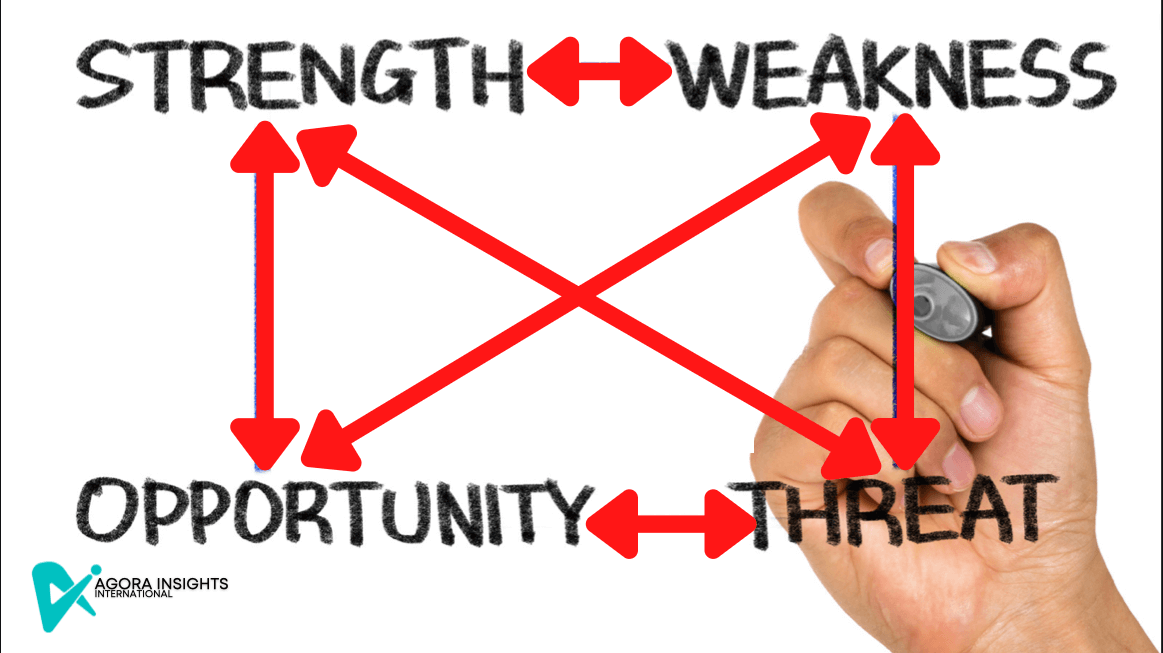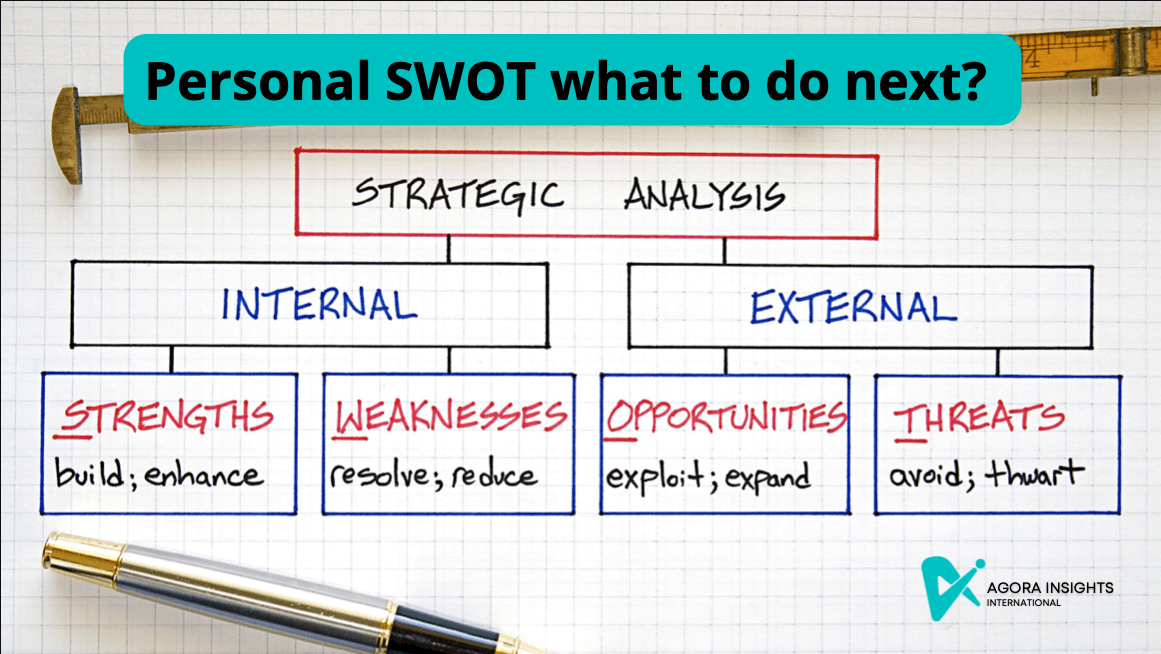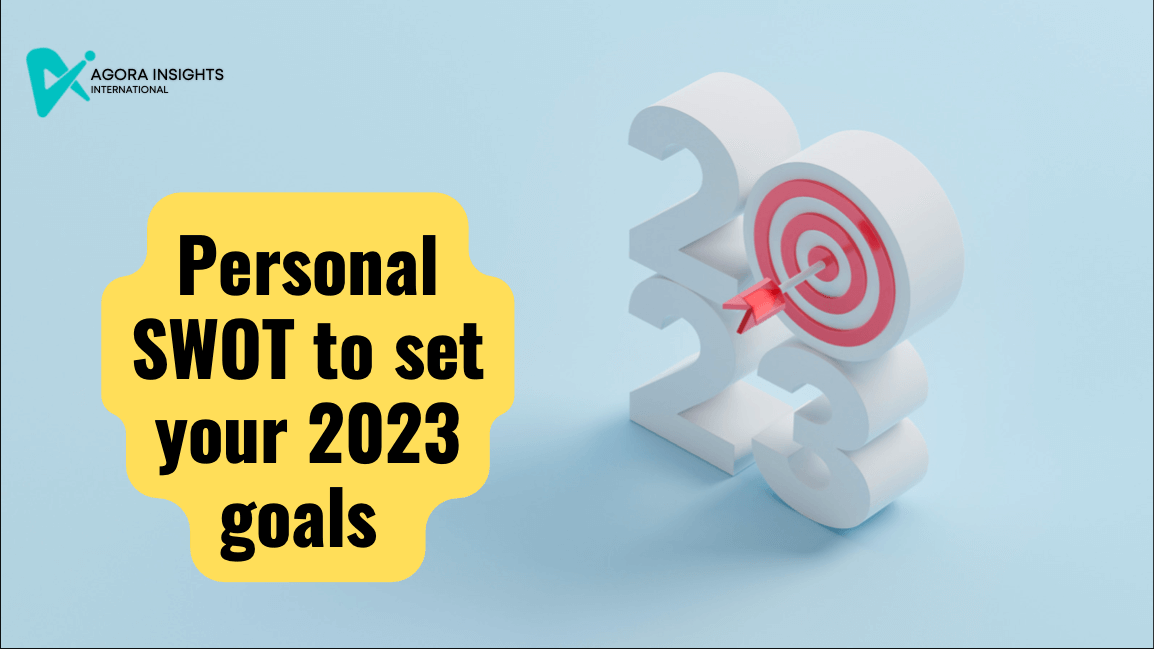As we approach 2023, what are your personal goals and how can you ensure you on the right track? SWOT analysis is used by many organizations to assess themselves as well as competitors in order to make strategies for continuous growth. However SWOT analysis is not limited to organization or company, it can be implemented on a personal level to assess ourselves in order to find strength and weakness and also the opportunity and threats by external factors. It could be more helpful for job seekers as well as employed personals to continuous growth.
By assessing ourselves, we can identify the area where we good at and also the area where we are weak and need improvement. It helps to become the best version of ourselves if used as a regular practice and followed the strategies made. It helps to uncover hidden opportunities which probably never looked at and by understanding your weaknesses, you can manage and eliminate threats that might otherwise hurt your ability to move forward. By personal SWOT analysis, you can achieve your career goal as it helps to understand all unnoticed facts of yourself.
Why assess your goals in 2023?

A personal SWOT analysis is a good way to find out what your strengths, weaknesses, opportunities, and threats are. It is especially helpful for job seekers and people who already have jobs but want to make a plan to move up in their careers. SWOT analysis can help you understand where you are now and come up with plans for success.
As 2023 gets closer, you should think about your own goals and conduct a SWOT analysis that will help you stay on track. By taking the time to complete a SWOT analysis and set clear personal goals, you can get a clear picture of their current situation and figure out how to get where they want to go. For long-term professional success, it's important to have clear personal goals.
How to implement the SWOT elements?

To evaluate or assess yourself using SWOT analysis, you must use a SWOT template, most commonly the four-squared template (each square for strength, weakness, opportunity, and threats).
In each of the four areas under consideration, you should ask yourself questions. You must be honest in order to generate meaningful results from a personal SWOT analysis. Consider yourself as if you were a colleague or a bystander, and consider criticism objectively. You should not limit your current strengths and should pay special attention to the skills that your peers lack.
Strengths:
First, consider your strengths – what skills, qualities or experience do you possess that make you stand out from others? These may include technical skills, communication abilities, leadership qualities or other attributes.

- What are your natural abilities?
- What skills do you have that consistently contribute to the business?
- How solid is your network?
- What do others think your strongest points are?
- What distinguishes you from others (for example, skills, certifications, education, or connections)?
- What do you do better than anyone else?
- What personal resources are available to you?
- Which of your accomplishments do you take the most pride in?
- What values do you hold that others do not?
Think about your strengths in relation to the people around you. For example, if you're a great business architect and the people around you are also great in business architecture, then this is not likely to be a strength in your current role – it may be a necessity.
Weaknesses:

The next step is to identify your weaknesses. This section looks at the areas where you need to improve and the things that will hold you back in your career.
- What are your negative work habits e.g. lazy, weak multitasking, disorganized, etc.?
- Does any part of your education or training need improvement?
- What would other people see as your weaknesses?
- Where can you improve?
- What are you afraid to do or most likely to avoid?
- What negative feedback about your personality or work habits have you received?
- Are you completely confident in your education and skills training? If not, where are you weakest?
Do you have personality traits that hold you back in your field? For instance, if you have to conduct meetings on a regular basis, a fear of public speaking would be a major weakness.
Again, consider this from a personal/internal perspective and an external perspective. Do other people see weaknesses that you don't see? Do co-workers consistently outperform you in key areas? Be realistic – it's best to face any unpleasant truths as soon as possible.
Are your strengths also your weaknesses?
Why strengths may also a weaknesses

I remember conducting a personal PDP at work. When really considering my strengths, I recognised that these are also my weaknesses. Being tenacious can be a great trait when under pressure to get projects delivered, but it may not be a good idea when people are managing stress. Consider the context when assessing your strengths and weaknesses. For example, you may excel at running workshops with stakeholders but struggle with in-depth policy analysis. If your strengths are not what people are looking for where you work, they can actually work against you. This is why it is critical to fully comprehend your situation and truly understand if it is a source of weakness.
Opportunity

For this section, consider any opportunities that may be available to you, such as taking on additional responsibilities, attending a course or participating in extra-curricular activities. Opportunities can open up new pathways for growth and development that can help you reach your goals.
Questions to examine what lies ahead in your career includes:
- Is your industry growing?
- Is there new technology in your industry?
- Is there a new demand for a skill or trait you possess?
- What new technology can help you? Or can you get help from others or from people via the Internet?
- Is your industry growing? If so, how can you take advantage of the current market?
- Do you have a network of strategic contacts who can help you or offer good advice?
- What trends (management or otherwise) do you see in your company, and how can you take advantage of them?
- Are any of your competitors failing to do something important? If so, can you take advantage of their mistakes?
- Do you have the solution to the long-running problem in the client’s system?
Threats:

Finally, reflect on any potential threats that may stand in your way. These could include external factors such as market conditions or competition. The factors to take into account include.
- Is your industry changing directions?
- Is there strong competition for your skillset when it comes to jobs?
- What is the biggest external danger to your goals?
- Are there any new professional standards you cannot meet?
- Do you lack any technology, education, or certification requirements that will impede your progress?
- Are any of your colleagues competing with you for projects or roles?
- Does changing technology threaten your position?
It might be difficult for you to assess yourselves hence it is highly advisable to invite someone who knows you better and can help you with this.
Can threats actually be opportunities in 2023?
Why threats can also provide opportunities to meet your personal goals

Like most entrepreneurs, often what might be a threat can actually set you up for your next career move, if you smart about it. Threats can also be seen as opportunities because they provide a chance to identify potential problems before they occur and develop strategies to avoid them. By looking at external factors such as market conditions or competition, you can gain valuable insight that can help you make more informed decisions. This could include finding new ways to stand out from the competition, leveraging resources more efficiently or making necessary changes in order to stay ahead of the curve. Threats are an inevitable part of growth and development, but by recognizing them and taking steps towards overcoming them, it is possible for these threats to become real opportunities for success.
What's next after completing a personal SWOT analysis?

Once you have filled out the matrix, there are two ways to analyze the information and build a strategy: matching or converting.
- Matching means connecting two of the categories to determine a course of action.
- For example, matching strengths to opportunities show you where to be aggressive and take action. On the other hand, matching weaknesses to threats expose those areas you should work on or situations to avoid and lets you know where to be more defensive of your position.
- To convert is to turn negatives into positives — in other words, converting your weaknesses into strengths, or threats into opportunities.
- This can mean growing a skill set through education or finding a creative way to feature a weakness as a strength. For instance, if you are very outgoing, working in an introspective and isolated environment may not suit you very well. But if you can work toward a position, such as sales, in which you interact with many people, that weakness turns into strength and could allow you to excel.
Conclusion:

By taking the time to complete a SWOT analysis, you can gain insight into your current situation and develop strategies to help move forward. SWOT provides an easy-to-follow framework that can enable you to stay on track with your personal goals in 2023 and beyond! This helps you focus on your strengths, minimize your weaknesses, and take the greatest possible advantage of opportunities available to you.
Don't forget to provide context when doing this to ensure you on the right path! Take action today and ensure a successful 2023!
Happy Learning Everyone
Want to get ideas, grow your career, study more or download free resources?
Check out our business analysis and business architecture course materials for more inspiration!
Post sponsored by Agora Insights Ltd

Post a Comment